Plenary Speakers
Rossini Lecture
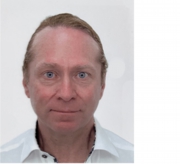
George Jackson
Imperial College London, ENGLAND
Significance of Quantum Effects in Appraising the Surface Thermodynamics of Nanoscopic Liquid Drops
Prof. George Jackson's latest developments in statistical mechanical theories and computer simulation
(Monte Carlo and molecular dynamics) are used by his group to provide a reliable predictive platform for complex fluids and ordered materials at the molecular level. He is a world leader in the development of molecular models to describe the thermodynamic properties of complex fluids, with a focus on application-driven solutions. He is one of the spiritual fathers of the statistical associating fluid theory (SAFT), a group of equations of state used to accurately predict the phase behaviour of mixtures. He is at the forefront of the new discipline of Molecular Systems Engineering, combining a fundamental physical understanding with engineering knowhow in the intelligent molecular design of processes and products. His research is deployed in a wide variety of industrial applications, ranging from pharmaceuticals and cosmetics to gas extraction and carbon capture.
Session 1. Fluid & Phase Equilibria
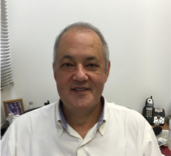
Watson Loh
University of Campinas (UNICAMP), BRAZIL
Miscibility of Polyelectrolyte Coacervates in Bulk and Confinement
Prof. Watson Loh has been working on understanding and controlling the association of surfactants, polymers, and nanoparticles using light and X-ray scattering techniques and calorimetry (ITC and microDSC), nanocellulose association and advanced emulsions.
Session 2. Colloids & Interfaces
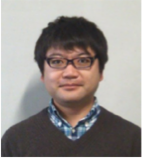
Hiroki Matsubara
Hiroshima University, JAPAN
Unique Interfacial Phenomena on Macroscopic and Colloidal Scales Induced by Two-Dimensional Phase Transitions
Prof. Hiroki Matsubara has been working on the physical chemistry of interfaces for about 20 years using interfacial tensiometry, ellipsometry, X-ray reflectometry etc. Based on the thermodynamic and structural information of surfactant adsorbed films, we discovered a variety of unique interfacial phenomena, such as wetting transitions of oil droplets into molecularly thin films, spontaneous merging and splitting of oil droplets at air/water interfaces, solid monolayer and bilayer formation in mixed cationic surfactant/alkane adsorbed films, switching of foam-film thickness, and oil-in-water emulsion stability.
Session 3. Bio-materials (Foods & Pharmaceuticals)

Dorothy Beckett
National Institute of Science (NIH), U.S.A.
Merging Thermodynamic Measurements with Computational Network Analysis to Elucidate the Molecular Origins of Protein Allostery
Prof. Dorothy Beckett is director of the NIGMS Division of Biophysics, Biomedical Technology, and Computational Biosciences (BBCB) at the NIH. The division funds quantitative research that spans the full range of biological organization from the molecular to the population level and supports technology development and resources to facilitate advances in basic biomedical research. Prior to joining the NIH she was on the faculty at the University of Maryland where she directed a research program that applied quantitative methods to understanding biological function.
Session 4. Bio-thermodynamics

Ernesto Freire
Johns Hopkins University, U.S.A
Calorimetric Analysis of the Structural Stability of Monoclonal Antibodies
Prof. Ernesto Freire has been the Henry Walters Professor at the Johns Hopkins University with appointments in the Department of Biology and Biophysics at the School of Arts and Sciences, and the Department of Biophysics and Biophysical Chemistry at the Johns Hopkins Medical School. After retiring from Johns Hopkins, Dr Freire cofounded a consulting company (thefreiregroup.com) aimed at helping biopharmaceutical companies address strategic market issues and critical drug development matters. He is a world recognized expert in biological thermodynamics. His research deals with: 1) the development of thermodynamic based platforms for engineering potent drug molecules that are more selective and less susceptible to target mutations; and 2) The development of thermodynamic strategies to optimize the long-term stability of monoclonal antibodies and other therapeutic proteins.
Session 5. Polymers & Organic Materials
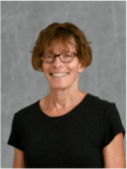
Sindee L. Simon
North Carolina State University, U.S.A
The Glass Transition: Kinetics and Thermodynamics
Prof. Sindee L. Simon is a world leader in the experimental sciences of calorimetry, dilatometry, and polymerization kinetics. Her innovative experiments, unique instrumentation, combined with strong mathematical modeling, have led to an internationally recognized program that has made, and continues to make, major contributions in three broad areas of materials physics and chemistry: structural recovery and aging of glasses, phase transitions and reaction kinetics at the nanoscale, and physics and chemistry of thermosetting polymers and composites.
Session 6. Inorganic Materials & Metals
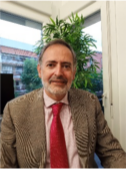
Luis A. Perez-Maqueda
Institute of Materials Science of Sevilla, SPAIN
Electric Fields for Inducing Chemical Reactions and Processing Materials
Prof. Luis A. Perez-Maqueda has been working on reactivity of solids, thermal analysis, ceramics, flash sintering, thermal energy storage.
Session 7. Condensed Matter: Physical Science & Applications
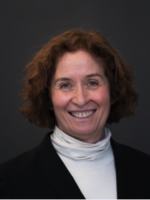
Meigan Aronson
University of British Columbia, CANADA
Alternatives to Order at T = 0
Prof. Meigan Aronson's group is focused on finding new materials that are at or near a quantum phase transition, where new phases of matter including novel order emerges at zero temperature. They carry out measurements of fundamental quantities, such as the transport of charge and heat, and especially their magnetic properties using a combination of lab-based techniques and also neutron scattering facilities.
Session 8. Instrumental & New Techniques
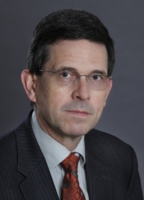
Christoph Schick
University of Rostock, GERMANY
Developments and Applications of High-Speed Scanning Calorimetry
Prof. Christoph Schick is interested in the interplay between glass transition and crystallization in polymers. His research focuses on advanced calorimetry as represented by temperature modulated and fast to ultra-fast scanning methods applied to polymers, metals, and other substances. He is interested in crystal nucleation, crystal growth, and the glass transition in these materials.
Session 9. Database & Industrial Applications
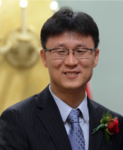
In-Ho Jung
Seoul National University, KOREA
From CALPHAD Thermodynamic Database to Digital Twins of Steelmaking Process
Prof. In-Ho Jung is a world-renowned expert in chemical metallurgy and thermodynamic database development. His main research interests are (i) new phase diagram experiments and CALPHAD thermodynamic database development for oxide, alloy, and salt systems, (ii) new material development and process optimization, and (iii) virtual process simulations of various high temperature industrial processes. Prof. Jung is also a co-developer of FactSage thermodynamic software, accessed by more than 1000 sites around the world, and has led the 'FactSage Steelmaking Consortium Project', sponsored by 13 international companies since 2009.
Session 10. Environmental & Safety
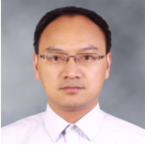
Qingsong Wang
University of Science and Technology of China, CHINA
Lithium Ion Battery Thermal Runaway Mechanism and Fire Preventions
Prof. Qingsong Wang has been working on lithium ion battery fire dynamics mechanism, lithium-ion battery fire prevention technology, new battery system fire safety.
